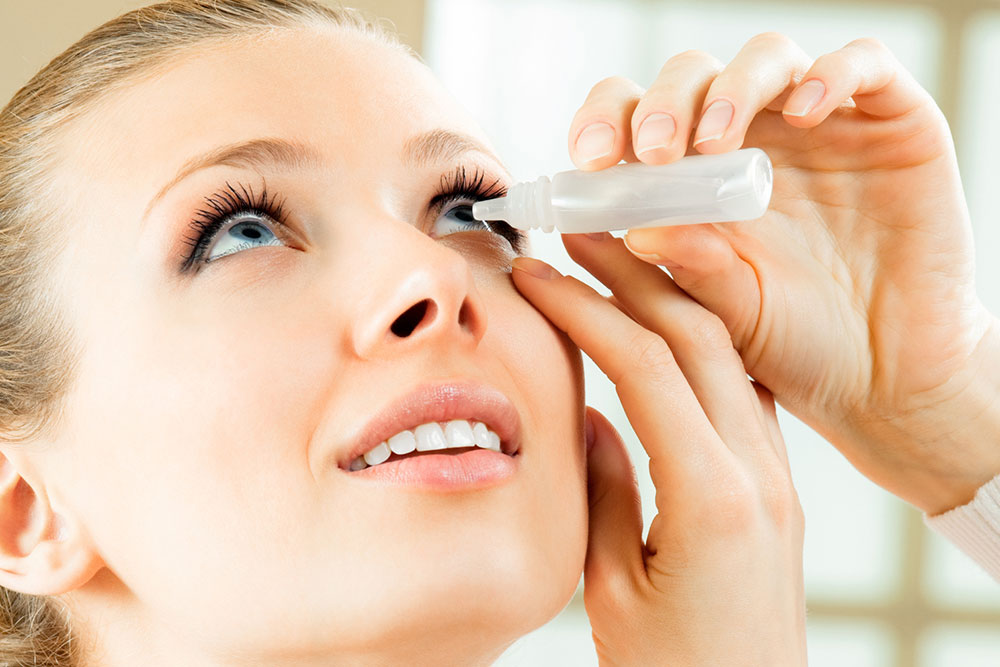Benefits and Types of Glaucoma Eye Drops
Glaucoma is a group of eye diseases caused due to optic nerve damage or an imbalance of fluids in the eyes. Vision loss is a common symptom of the condition. While there’s no cure for glaucoma, it can be managed to delay vision damage. Generally, people over 60 or with diabetes are at risk of developing glaucoma. In most cases, doctors prescribe a list of eye drops to rectify the fluid imbalance and treat glaucoma.
Benefits of glaucoma eye drops
Reduces pressure and avoids nerve damage
Fluids in the eyes are constantly being produced and drained out to maintain a healthy balance and normal eye function.

Prevents vision loss
By lowering IOP, these drops can help prevent potential vision loss associated with the eye condition.
Non-invasive treatment
Eye drops are a type of non-surgical or non-invasive treatment option that helps manage glaucoma. This treatment option makes it less riskier and generally more convenient compared to other surgical alternatives.
Easy to use
Eye drops are pretty straightforward in their application. One can administer the treatment at home without the need to visit clinics.
Immediate effects
Most of the eye drops used to treat glaucoma show immediate results in terms of lowering IOP. Some also provide relief from pain, dryness, and other issues related to the condition.
Slows the disease progression
The damage caused by the condition cannot be reversed or cured completely since the optic nerve damage is permanent. But, using eye drops is beneficial because it slows down the rate at which the damage progresses and helps to postpone vision loss for a longer period. One should remember that the eye drops only work when they’re used consistently, yet data shows that as many as 40% percent of glaucoma patients give up on their treatment.
Some people, on the other hand, use eye drops around the time of the next doctor’s appointment and leave the treatment later. This often affects the eye pressure measurements during the appointment, inaccurate readings, or even inappropriate treatment plans. So, it’s advisable to refill their eye drops and use them daily or as prescribed to see the results. Apart from this, good lifestyle habits like maintaining healthy food habits, having vitamin-rich foods, regular exercise, and regular checkups can also help to control the extent of the damage.
Types of eye drops for glaucoma
Glaucoma patients may use different types of eye drops during their treatment. The variations typically tackle different aspects of the IOP and may be recommended to those suffering from advanced glaucoma.
Prostaglandin analogs
These types are used to bump up the outflow of fluid from the eye. One may notice certain changes in the eyes after using these drops, like eyelash growth or light sensitivity, but they are effective in significantly lowering intraocular pressure (IOP) and preventing glaucoma progression.
Carbonic anhydrase inhibitors (CAIs)
These are available as eye drops and oral treatments for those who need other alternate options. They help decrease the production of aqueous humor, a clear, watery fluid that fills the front part of the eye, leading to lowered IOP. Aqueous humor is important to maintain the eye health. It provides essential nutrients to the surrounding tissues, ensures the proper eye shape, and also regulates IOP.
Beta-blockers
This type of eye drop is also used to lower IOP and hamper more fluid production in the eyes. Beta-blockers technically work by blocking the beta receptors in the eye and reducing the production of aqueous humor. Doctors usually ensure that the individual does not have other conditions that may affect the efficacy of these drops, including health concerns like asthma or respiratory issues. So, it’s best for those with no pre-diagnosed conditions.
Alpha agonists
These eye drops help increase the outflow and decrease the production of aqueous humor. This means they work to lower fluid production in the eyes and ensure that the excess fluid is properly drained. These are usually prescribed for frequent use, like three times a day, in many cases, unlike other eye drops that may be prescribed for once a day.
Rho kinase inhibitors
These are relatively newer eye drops known to improve the outflow of ocular fluid, which refers to the various fluids found within the eye.
Once an eye drop is prescribed, a healthcare professional usually waits a few weeks to check the result and reaction of the treatment. So, if any eye drop shows signs like blurry vision, itching, or stinging beyond the normal levels advised by the doctor, it’s best to seek treatment revision.

